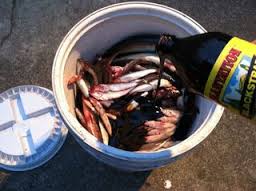Homemade Fertilizer
As a response to environmental concerns on global warming, a movement was started promoting the “organic” way of life. It essentially encourages people to lessen their carbon footprint by consuming organically grown foods and even growing their own organic gardens, among others. While some people found it easy to grow their own food, others who were not used to the gardening and farming way of life found it rather challenging. Thankfully, there is an abundance of information shared by concerned individuals on how to start organic gardening and farming. One of the most useful information, however, remains to be how to make homemade fertilizer because it will be greatly needed if the plants are to survive.
First: Soil Test
The first thing one has to do before proceeding to even gather materials to make fertilizer is to test the soil. This is very important because it will help give an idea of what nutrients the soil lack and what type of fertilizer ingredient can help supplement it. This can be done by getting a sample to a professional in a soil-testing laboratory who can test it for a fee. Once the soil is tested and the lacking nutrients, if any, are determined, gathering materials would be the next step.
Readily Available Materials
There are a lot of materials that can be used in making fertilizers at home. These materials can be easily found mostly in the kitchen. Examples of such materials would be eggshells, coffee grounds, vegetable peelings, fruit peelings, molasses, and tea grounds. Some other materials are the less pleasant smelling ones because it involves wastes such as horse, chicken, or basically any kind of animal manure. Dog, cat and rabbit droppings have been recommended by gardeners as well. The availability of manure as fertilizer materials will, however, depend on whether you live in or near a farm or you own at least one or two of those animals.
Particular Uses
It goes without saying that materials for the homemade fertilizer will first have to be gathered. However, if there is a particular type of plant one is working on, it might be a good idea to do some reading on what type of plant the materials are best for. For instance, coffee grounds are particularly best for plants that need much acid such as roses, tomatoes, and blueberries. Banana peelings work wonderfully for roses too. Egg shells help peppers and tomatoes produce a robust yield. Vegetable peelings work best for cucumbers, roses, cabbages, and leafy greens. Rabbit droppings, when mixed with other materials, help wonderfully with growing tomatoes.
